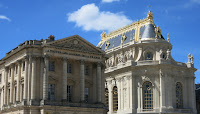 |
| image from here |
Anyway, here are the goals and how it's going.
- Be disciplined in prayer/scripture routines (and start tracking them to encourage it)
- Teach the family
I started tracking prayer times and the chapter(s) I read of the Bible each day; that has encouraged me to make it more consistent and quality. And I'm teaching the family a little more. Room for improvement, but encouraging.
Nutritional/Fitness
- Keep weight under 185 lbs (goal: 180)
- Get a six-pack
- Complete 240 workouts (run, bike, gym)
- Be able to do 60 push-ups in a set and 15 pull-ups
- Get good budgeting system in place
Work in progress. We've talked to a few people, have some ideas, and have future meetings planned to work this out.
Reading
- Read 50 books
- Complete my German Reading List
I completed my GRL last month, and really enjoyed it. On track to exceed 50 books.
Travel
- Visit the Alps
- Take the kids to new countries (Belgium, Liechtenstein, Italy, etc.)
We got one last trip to the Alps in this past weekend (to Austria; pictures once we get our PC back). We didn't travel as much as we would have liked here, but pandemics limit things. In the end, we got the kids to Netherlands, Belgium, France, Luxembourg, Switzerland, Austria, and many places in Germany. Not too bad.
Fluency
- Obtain a certification in German
Work in progress- I plan to test when we get home.
Games
- Minimize game collection to what I play regularly
Didn't happen- game collection is going the wrong direction :-). But I'll pare it down.
Adjust
- We move back to America this year, so finding a house, job, school, etc. will be priorities as we approach the summer























































